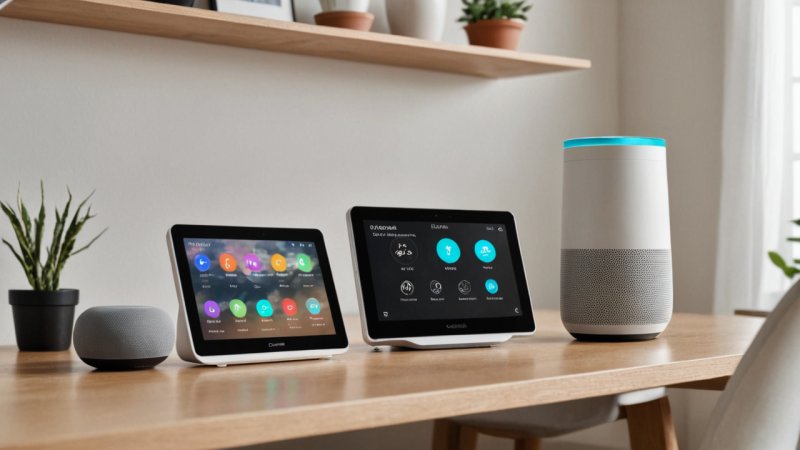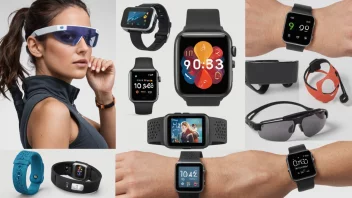As technology continues to evolve, our homes are becoming smarter and more connected than ever before. Among the myriad of gadgets available, smart speakers and smart displays stand out as two of the most popular options for enhancing daily life. Both devices can control smart home systems, provide information, and entertain, but they have distinct features that cater to different needs. In this article, we will compare smart speakers and smart displays, looking at their advantages, disadvantages, and how they can transform your home experience.
Design and Aesthetics
When it comes to design, both smart speakers and smart displays offer appealing aesthetics that can complement your home decor. Smart speakers, such as the Amazon Echo and Google Nest Audio, are typically compact and designed to blend seamlessly into any environment.
On the other hand, smart displays like the Google Nest Hub and Amazon Echo Show feature larger screens that can serve as both functional devices and decorative elements. Their screens enable a more interactive experience, allowing users to view photos, watch videos, and even display digital art. Ultimately, the choice between the two will depend on your personal taste and how you plan to use the device.
Functionality
Smart speakers excel in audio performance and voice recognition. They are primarily designed for hands-free operation, allowing you to play music, set reminders, and control smart home devices using voice commands. They often have superior sound quality compared to their display counterparts, making them ideal for music lovers.
In contrast, smart displays offer additional functionality thanks to their touchscreen interface. Users can not only issue voice commands but also interact with their devices by tapping the screen. This feature is particularly useful for tasks such as following recipes, viewing video calls, or controlling smart home devices visually. The added screen can enhance the user experience significantly, especially for those who prefer a more interactive approach.
Smart Home Integration
Both smart speakers and smart displays can integrate with various smart home devices, such as lights, thermostats, and security cameras. However, the way they facilitate this integration differs. Smart speakers act as a hub, allowing you to control your devices through voice commands. This hands-free operation can be incredibly convenient when your hands are full or when you're relaxing on the couch.
Smart displays, while also capable of controlling smart home devices, offer a visual component that can make it easier to manage multiple devices at once. For instance, you can easily see the status of your smart lights or security camera feed on the display, allowing for quicker adjustments and monitoring. If you are someone who prefers visual feedback, a smart display might be the better option.
Entertainment Options
Entertainment is a key feature of both smart speakers and smart displays, but they cater to different preferences. Smart speakers are perfect for those who enjoy music and podcasts. They typically provide access to a wide range of streaming services and can fill your home with high-quality sound.
Smart displays, however, take entertainment to the next level. In addition to streaming music, they can play videos, display news updates, and even host video calls with friends and family. The larger screen allows for a more immersive experience, making them ideal for watching cooking tutorials or following along with your favorite shows while you multitask in the kitchen. If visual content is important to you, a smart display is the way to go.
Privacy Concerns
Privacy is an important consideration when it comes to smart technology. Both smart speakers and smart displays have microphones that can listen for voice commands, raising concerns about potential data collection and surveillance. However, the presence of a camera on smart displays can heighten these concerns even further.
Many users appreciate the ability to disable microphones and cameras for privacy, but it’s essential to understand how each device manages these features. Smart speakers typically offer a physical mute button, while smart displays often include a camera cover or a setting to disable video calls. When choosing between the two, consider your comfort level with privacy and how important these features are to you.
Price and Value
Price is always a factor when making a tech purchase. Generally, smart speakers tend to be more affordable than smart displays. This is due to their simpler design and functionality. For those on a budget, a smart speaker can provide many of the same features as a smart display at a fraction of the cost.
However, if you’re looking for a more versatile gadget that offers both audio and visual capabilities, investing in a smart display may be worth it. While the initial cost is higher, the added functionality can provide greater value in the long run, especially if you enjoy video content and interactive features.
Conclusion
In conclusion, both smart speakers and smart displays have unique features that can enhance your home experience. Smart speakers are ideal for those who prioritize audio performance, ease of use, and budget-friendly options. Meanwhile, smart displays offer a more interactive experience with a focus on visual content and smart home management. Ultimately, the best choice will depend on your personal preferences, lifestyle, and how you plan to utilize the technology in your home. Whether you choose a smart speaker or a smart display, investing in one of these gadgets will undoubtedly transform your living space into a more connected and efficient environment.






